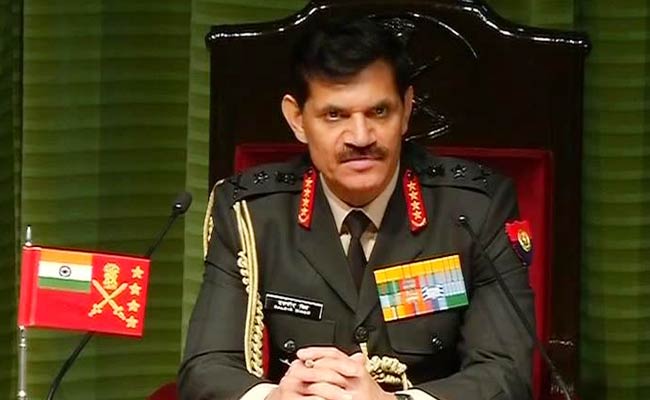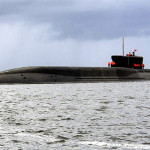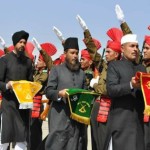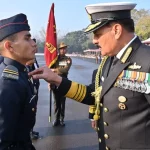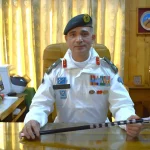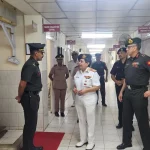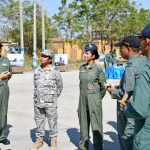The Indian Army is the land-based branch of the Indian Armed Forces. It is one of the largest standing armies in the world and is responsible for the country’s territorial integrity, national security, and defense.
Indian Army Structure
The Indian Army is organized into several commands, formations, and units, which are briefly described below:
- Commands: The Indian Army is divided into seven commands, each responsible for a specific geographic area in the country. These are:
- Northern Command
- Eastern Command
- Western Command
- Southern Command
- Central Command
- Army Training Command
- South Western Command
- Formations: The Indian Army has several formations that are responsible for specific tasks. These include:
- Corps: The army is divided into several corps, each consisting of two or more divisions. There are 14 corps in the Indian Army.
- Division: A division consists of several brigades and is responsible for a specific geographic area.
- Brigade: A brigade consists of several battalions and is responsible for a specific tactical task.
- Units: The Indian Army has several units, each with a specific role to play. These include:
- Infantry: The infantry is the backbone of the Indian Army and is responsible for ground combat.
- Armored: Armored units consist of tanks and other vehicles and are responsible for armored warfare.
- Artillery: Artillery units provide indirect fire support to ground troops.
- Engineers: Engineer units are responsible for building and maintaining infrastructure and providing mobility support to ground troops.
- Signals: Signal units provide communication support to ground troops.
Indian army ranks and insignia
The Indian Army has a hierarchical rank structure with officers, junior commissioned officers (JCOs), and other ranks. The ranks and insignia of the Indian Army are as follows:
- Officers:
- Field Marshal (Honorary rank)
- General
- Lieutenant General
- Major General
- Brigadier
- Colonel
- Lieutenant Colonel
- Major
- Captain
- Lieutenant
- Junior Commissioned Officers (JCOs):
- Subedar Major
- Subedar
- Naib Subedar
- Other Ranks:
- Havildar
- Naik
- Lance Naik
- Sepoy
The rank insignia of the Indian Army varies depending on the rank and the type of uniform being worn. However, some general features of the Indian Army rank insignia are:
- Officers wear stars on their shoulder boards, whereas JCOs wear chevrons on their forearm.
- The number of stars or chevrons indicates the rank of the person.
- The color of the background of the rank insignia also varies depending on the type of uniform being worn. For example, the rank insignia on the olive green uniform has a light brown background, whereas on the ceremonial uniform, it has a gold background.
Overall, the rank structure and insignia of the Indian Army are designed to signify the authority, responsibility, and hierarchy of the force.
Indian Army Training Centre
The Indian Army has several training centres and academies that provide training to its personnel. These training centres are responsible for providing basic and advanced training to soldiers, officers, and other ranks. Some of the major Indian Army training centres are:
- Indian Military Academy (IMA), Dehradun: This is the premier training institution for officers in the Indian Army. The IMA trains officer cadets for the Indian Army through a 4-year course called the Indian Military Academy Course.
- Officers Training Academy (OTA), Chennai: The OTA provides training to short service commission (SSC) officers and women officers who are selected through the SSC entry scheme. The OTA offers a 49-week training course.
- National Defence Academy (NDA), Pune: The NDA is a joint services academy that trains cadets for the Indian Army, Indian Air Force, and Indian Navy. Cadets are selected through the National Defence Academy Entrance Examination and are trained for 3 years.
- Infantry School, Mhow: The Infantry School is responsible for providing training to infantry soldiers and officers. It offers a variety of courses ranging from basic training to specialized courses like mountain warfare, desert warfare, and counter-insurgency operations.
- Armoured Corps Centre and School, Ahmednagar: This centre provides training to armoured corps soldiers and officers. It offers courses in tank warfare, armoured vehicle maintenance, and armoured operations.
- School of Artillery, Deolali: The School of Artillery provides training to artillery soldiers and officers. It offers courses in gunnery, rocketry, and missile systems.
- Army War College, Mhow: The Army War College is responsible for providing advanced training to senior officers in the Indian Army. It offers courses in military strategy, joint warfare, and national security.
These training centres are critical to maintaining the combat readiness and effectiveness of the Indian Army. They provide soldiers and officers with the skills and knowledge necessary to operate in a variety of combat environments and situations.
Indian Army Types of Commission
In the Indian Army, there are two types of commissions – Permanent Commission (PC) and Short Service Commission (SSC). The difference between these two types of commissions is as follows:
- Permanent Commission (PC): A Permanent Commission in the Indian Army is a career option that allows officers to serve until they retire. Officers who are commissioned through the National Defence Academy (NDA), Indian Military Academy (IMA), Officers Training Academy (OTA), or other Direct Entry (DE) schemes are eligible for a Permanent Commission. This commission is granted after successful completion of the training and is valid until the officer reaches the age of retirement.
- Short Service Commission (SSC): The Short Service Commission is a temporary commission that allows officers to serve in the Indian Army for a fixed period of time, usually 10 to 14 years. The SSC is open to both men and women and can be obtained through various entry schemes like NCC Special Entry, Judge Advocate General (JAG) Entry, Technical Entry Scheme, etc. After the end of the initial period of service, officers can choose to extend their service or leave the Army.
The benefits and terms of service differ between the two types of commissions. Officers with a Permanent Commission are eligible for a pension after retirement, while those with an SSC are not. Additionally, Permanent Commission officers can rise to higher ranks in the Army, while SSC officers may not have the same opportunities for career progression. However, SSC officers can choose to leave the Army after their term of service and pursue other career options.
Overall, both types of commissions offer unique opportunities and challenges, and individuals interested in serving in the Indian Army can choose the commission that best suits their career aspirations and personal goals.
Read more

